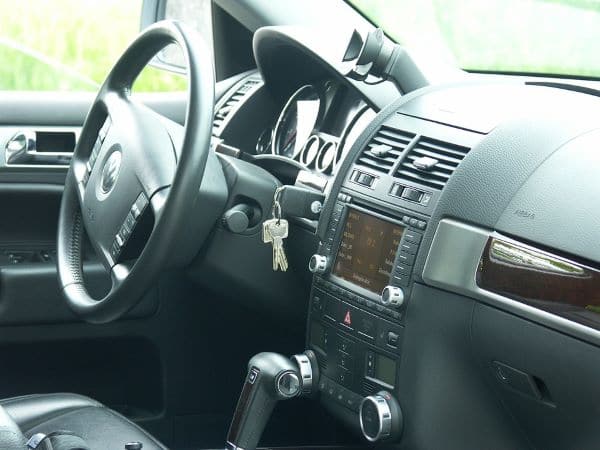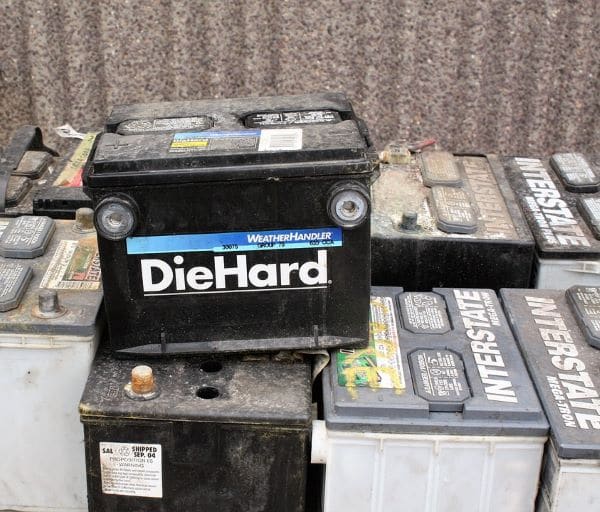There are many reasons why a vehicle won’t crank over when it is cold out or after a night with the lights on, but what does it mean if the car won’t start when the engine is hot? After all, you’ve just driven the car, so you know it works. You may start to feel like your vehicle is playing games with you, but you aren’t going crazy. There are some real problems that can occur, mainly when the engine is hot. Whether the car hesitates to start or the car overheated and won’t start, we have some simple solutions for you to look at.

From a clogged air filter to a loose connection, there are many options in this list that you might be able to repair on your own, while some others may need professional attention. Perform some troubleshooting to see if you can get your vehicle back on the road quickly.
Table of Contents
Top Reasons a Car Won’t Start When Engine is Hot
In this guide, we cover the most probable reasons the car won’t start when hot. However, there could be other options beyond this list. Here’s just an idea of some possible issues to get you started.
- Clogged Air Filter
- Vapor Lock
- Loose or Corroded Battery Connection
- Loose or Corroded Engine Ground Connection
- Leaking Fuel Injector or Regulator
- Faulty Starter Motor
- Defective Crankshaft or Camshaft Position Sensor
- Fuel System Issues
Clogged Air Filter
The engine air filter is a part that should be replaced regularly to avoid issues. If you aren’t performing regular engine maintenance, you might end up with a clogged air filter.
The air filter is designed to keep contaminants, debris and dust out of the engine. However, these particles build up in the filter, causing an obstruction of air. Without the right amount of air in the combustion chamber, your vehicle could suffer from the following issues:
- Decreased acceleration
- Engine misfires
- Trouble starting
- Reduced power and performance
- Poor fuel economy
Because of how inexpensive an air filter is, it’s often recommended to change it if you notice any engine problems. However, if you want to check the air filter, you can follow these steps.
- Find the engine air filter. In most cases, it is found under the hood in a rectangular-shaped box towards the front of the engine compartment.
- Pull out the filter and examine the media.
- Shine a light through the media to see if it is clogged.
- Replace the filter if you cannot see the light shining through.
Here’s a helpful video showing you how to replace the engine air filter.
Vapor Lock
When fuel vaporizes before it hits the combustion chamber, you are dealing with a vapor lock situation. In many cases, vapor lock occurs as fuel begins to boil while moving into the fuel injection system.
When this happens, the vapor mixes with the liquid to prevent the flow the engine requires. Not only can hot weather cause this, but fuel lines situated too close to the hot engine can also contribute to a vapor lock situation, leaving you to wonder why the car won’t start when hot.
However, vapor lock will not occur because of a clogged vent line. These lines move away from the fuel tank, making it easy for the vapors to escape the tank and collect in a canister. When these lines become clogged the vapor will not make its way back into the system because the pump is submerged, but it can cause a buildup in the tank.
Some of the top vapor lock symptoms include:
- Trouble starting the engine
- Lack of power and performance
- Stalling
If you think a vapor lock situation is causing the problems, here are some steps you can take.
- Open the hood.
- Take out the air cleaner assembly to reach the opening on the carburetor (if equipped) or the throttle body.
- Have a helper try to start the vehicle.
- While the engine cranks, spray some starting fluid into the throttle valve.
If the engine seems to work better, there might be a vapor lock. However, it’s possible to do another test with some ice and a plastic bag.
- Open the hood.
- Put a small bag of ice onto the fuel line that’s located between the carburetor and fuel pump. This step brings down the temperature of the fuel line to allow vapor the chance to condense.
- Try starting the car again after a few minutes.
- If the engine starts, you might have had a vapor lock.
While less common, the fuel injection system can also experience a vapor lock if the vapor makes its way into the delivery system. However, the same symptoms will appear as if you had a bad fuel pump, defective ignition coil or broken ignition control module.

Loose or Corroded Battery Connection
Because of vibration, the car battery connections can sometimes come loose. These connections are also vulnerable to corrosion because of the battery acid. Both issues can lead to trouble starting the engine.
Symptoms of corroded or loose battery connections include:
- Trouble starting the engine
- Difficulty keeping the battery charged
- Issues with the electrical accessories
A small amount of battery corrosion might not prevent the vehicle from starting, but it will get worse over time. As the temperature of the electrical system starts to rise, the electrical components on that circuit might struggle to run correctly. You might also experience trouble starting the engine until it cools down.
If you want to look for corrosion, here are some steps to take.
- Plug a computer memory keeper into the car’s outlet.
- Disconnect the negative terminal from the battery first.
- Disconnect the positive terminal.
- Inspect both terminals for any sign of green or white substances around the posts.
If you notice corrosion on the battery, cleaning it isn’t a big deal. Grab some gloves along with a baking soda and water solution to follow the steps outlined in this video.
If there is no corrosion on the battery terminals, you will want to check all of the connections instead. Make sure everything is tight and secure for a proper connection.
Additionally, you can load test the battery to ensure it is in good working order. Most automotive batteries only last between three to five years under normal conditions. If you are hard on your vehicle or you don’t drive a lot, the battery could wear down sooner.
Loose or Corroded Engine Ground Connection
Having a reliable ground connection is vital to the proper operation of your engine. If the cables become loose or corroded over time, you can start to experience issues because of the increased circuit resistance.
Not only can the starting system be affected, but there could be trouble with other electrical components. However, a bad ground is hard to diagnose from a visual inspection alone. Symptoms might include:
- Strange behavior from electrical components
- Trouble starting the engine
- Trouble with the automatic transmission
- Increased resistance to actuators and sensors
Thankfully, you can use a multimeter to perform a voltage drop test of the engine grounds. To locate the grounds for your vehicle, you might need to reference the service manual. Here’s a visual example that might make it easier for you.
Leaking Fuel Injector or Regulator
This problem isn’t much different from the vapor lock we discussed earlier. If you are having trouble with warm starts, you could be dealing with a leaking fuel injector or fuel pressure regulator. In some cases, the fuel pressure dampener can also cause issues.
If your vehicle has a worn fuel pressure regulator or injector, everything could run normally when the engine is first started, making it harder to diagnose issues. However, when the lines become hot, symptoms become more noticeable, leading to trouble starting the engine.
If you are dealing with one of these issues, you might notice:
- Engine stalling
- Trouble starting
- Hesitation
- Misfiring
Finding out if the car has a flooded cylinder is pretty simple, just follow these steps.
- Turn off the engine and wait for a few minutes.
- Depress the gas pedal to allow air into the engine.
- Try starting the engine again.
If the car starts easier when the gas pedal is depressed, there could be a leaking injector. In some cases, adding a high-quality fuel injection system cleaner can make all the difference. However, the solenoid inside the injector could also be to blame, requiring a complete replacement.
Faulty Starter Motor
Over time, the motor can wear down in the starter. If the starter won’t crank when hot, it could be due to the rising engine temperatures and a component that is beginning to fail.
Inside the starter motor, there are carbon brushes and a slip ring commutator, allowing current to flow to the windings that spin inside. As the brushes wear out or the springs weaken, there is more resistance in the motor. Heat only further compounds the issue because the electrical resistance rises.
The top signs that the starter motor is failing include:
- Trouble starting the engine
- Buzzing noises from the motor
- Loud clicking when trying to crank the engine
- Grinding sound
If you check for a voltage drop in the starting system, you might be able to determine if the motor is faulty. However, any issue with the starter motor will require replacement.
Here’s a handy video showing how to test a starter and solenoid assembly.
Defective Crankshaft or Camshaft Position Sensor
In some cases, a broken camshaft or crankshaft position sensor can cause issues when the engine is hot. The crankshaft position sensor monitors the rotation of the crankshaft and sends the information back to the ECU. The same goes for the camshaft position sensor.
The ECU takes this data to regulate how the spark plugs are firing. If there is a fault in the circuitry, the problem might not be noticeable until the engine is hot. Once the engine reaches higher temperatures, the internal circuitry expands, leading to intermittent trouble. Once the engine cools off, the sensor might work normally again.
Here are some other symptoms you might notice with a malfunctioning position sensor.
- Check Engine Light Blinks
- Trouble starting the engine
- Backfiring or stalling engine
- Vehicle vibrations
The problems will continue to worsen, leading to stalling and trouble starting at any engine temperature. If you don’t take care of the problem promptly, you could be stranded.
With a little guidance, you can test both of these sensors. Here is a video that should lead you in the right direction.
Fuel System Issues
If you are having trouble pinpointing the problem, don’t forget to look at the fuel system itself. By checking the fuel system, you can determine if the engine is lacking the necessary gas to keep moving. Try this test while the engine is already warmed up but turned off.
- Remove the air cleaner assembly so you can access the throttle body. You may need the service manual to find the proper location.
- Open the throttle valve manually or have your helper push on the accelerator pedal to open it.
- Spray starting fluid into the throttle body while your helper tries to start the vehicle.
If the engine tries to turn on, it’s possible that there isn’t enough fuel reaching the cylinders. You will want to closely inspect the fuel filter, fuel pump and injectors for a possible problem. However, if the starting fluid doesn’t make a difference, your problem probably doesn’t lie within the fuel system.
Other Possible Reasons the Car Struggles to Start
There are numerous reasons that a car can fail to start, even when the engine is already warmed up. What we provided above is simply a list of the most common complaints, but you will have to do further research if none of those seem to be the culprit.
Some of you might be asking – can a bad coolant temperature sensor cause a car not to start? Absolutely! If the sensor doesn’t respond to the coolant temperature, the engine computer might alter the fuel mixture to compensate, leading to a no-start situation. Honestly, many of the major systems can be experiencing a fault when the car fails to start.
If the Check Engine Light is on, your best means of diagnosing the issue is to use an OBDII code scanner. With these codes in hand, you will be led to the system that is causing the malfunctioning, making it easier to fix the problem.
When in doubt, it’s always best to visit your local mechanic for more support. You should never continue driving a car that exhibits trouble starting, even if it only occurs when the engine is hot. If you let the problem go, you could end up stranded and with more costly repairs in the future.
FAQs
What should I do if my car is struggling to start?
At the first sign of trouble, you should perform a visual inspection of the car. Pop the hood and take a peek at the battery connections, as this is a common issue. If there is a Check Engine Light on, you can also use a code scanner to hunt down the fault. If you aren’t able to pinpoint what is causing the issues, you might need to speak with a mechanic for additional help.
What’s wrong if my car overheated and won’t start?
If the car ran hot now won’t start, you could have some serious problems on your hands. When the engine overheats, the cylinder head and engine block can warp. When this happens, the engine might not start because of valve damage or a lack of compression.
Overheating is often caused by low coolant levels, a leak, a plugged radiator, collapsed hoses, a broken cooling fan, a bad water pump, a malfunctioning drive belt or a faulty thermostat. The only way to resolve the no-start condition is to find what caused the engine to overheat and repair it. Additionally, any damage done by the overheating will also need to be resolved before the car will run normally again.
Is something failing if my car takes a while to start?
Your car will often try to reveal signs that something is wrong before completely failing. Having trouble starting the engine is one of these signs that should always be taken seriously. If you suddenly have trouble starting the engine, it’s time for a complete inspection and diagnosis to determine where the problem lies. If you aren’t capable of doing the diagnostic work, have a qualified mechanic take a look at it before you are stranded.
What is a hot start issue?
The term “hot-starting” discusses the ability of the engine to start normally when it is cold but struggle to operate once it is warmed. In these conditions, the engine may not fire up after it has reached a normal operating temperature but will once it cools down for a short time.
Does hot summer weather affect my car’s starting ability?
Hot temperatures can take a toll on the automotive battery. However, you might not notice any issues until the temperature starts to cool down and the battery is worn out. Often, when damage is done to a battery or other automotive components, the results are not immediately noticed, making it difficult to figure out what caused the problem in the first place.
Final Thoughts
If your car won’t start when the engine is hot, it’s time to get serious about finding the problem. While it could be something as simple as a loose connection, you could be looking at something more serious. Either way, finding the fault and fixing it is the only way to ensure trouble-free transportation down the road.
